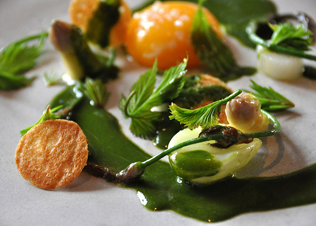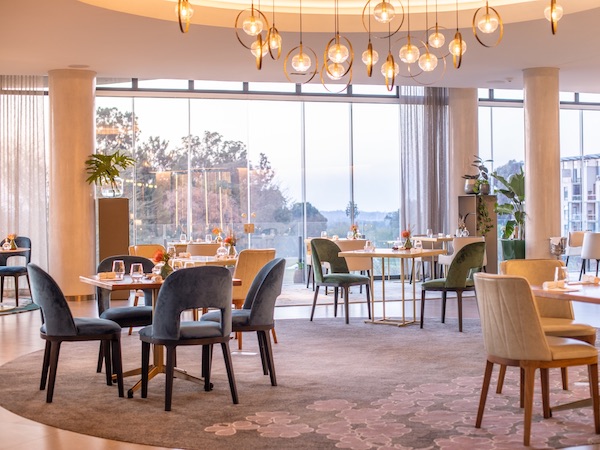News
The instant guide to international food awards
Wednesday, July 18th, 2012
From stars and gold medals to chef hats and trophies – restaurants around the world are rated, celebrated and awarded in different ways. But who decides who wins, how, and why? And how do they compare to our own Eat Out Awards? We take you through the food awards basics.
San Pellegrino World’s 50 best restaurants
History: First launched in 2002, this list is compiled by Restaurant Magazine and aims to be as globally representative as possible.
Judging process: The list is created by The World’s 50 Best Restaurants Academy, a group of over 800 international leaders in the restaurant industry, divided into regions, each with a judging panel. These food critics, chefs, restaurateurs and highly regarded ‘gastronomes’ on the panel each have seven votes, at least three of which must recognise restaurants outside of their region. Every restaurant in the world is eligible, from small, unknown eateries in secluded regions to the best-known restaurants in the world.
Recent winners: This year’s top 10 are Noma, El Celler de Can Roca, Mugaritz, D.O.M., Osteria Francescana, Per Se, Alinea, Arzak, Dinner by Heston Blumenthal, and Eleven Madison Park. South Africa’s The Test Kitchen came in at number 74 and The Tasting Room at number 57.
Michelin stars
History: André Michelin (the company that brought us, perhaps rather fittingly, the chunky Michelin man) first published the Red Guide in 1900 to help drivers find accommodation and dining spots while travelling through France. Red Guides are now published for more than a dozen countries and selected cities such as Paris, London, Tokyo and New York. Unfortunately, no South African cities have been reviewed and, therefore, none of our restaurants are eligible to receive Michelin stars.
Judging process: Reviewers are anonymous and the Michelin company pays for their meals. One star indicates very good cuisine in its category, two stars represent excellent cuisine that’s worth a detour, and a rare three stars are awarded to restaurants offering exceptional cuisine worth a special journey. Read more about Michelin-starred restaurants around the world here.
La Confrérie de la Chaîne des Rôtisseurs
History: This international gastronomic society was founded in Paris in 1950 to honour the traditions of the royal guild of goose roasters (yes, that was a thing), which was formed in 1248.
The competition: Every year La Chaîne des Rôtisseurs organises the Jeunes Chefs Competition for chefs under 27. Competitors are given a ‘black box’ of ingredients, 30 minutes to write a menu and three and a half hours to prepare a three-course dinner for four people. It was first organized in 1977 in Switzerland; now competitions are held at regional, national and international levels in countries around the world.
Judging process: Experienced professionals who are Chaîne members are selected to serve as judges. Contestants’ dishes are assessed on taste, presentation and originality. Scores are also given for cleanliness and organisation in the kitchen.
James Beard Food (JBF) Awards
History: Established in 1990, the James Beard Foundation Awards recognises culinary excellence in North America.
The awards: Categories include baking and desserts, health focus, photography, writing on food and, of course, restaurants and chefs. Winners receive a certificate and a medallion.
Judging process: Each category has a committee comprised of industry professionals who volunteer to oversee the procedures and selection of judges for their respective awards.
Recent winners: Outstanding Restaurant: Boulevard; Outstanding Chef: Daniel Humm, Eleven Madison Park; Outstanding Restaurateur: Tom Douglas, Tom Douglas Restaurants; and Outstanding Service: La Grenouille.
Australian Good Food and Travel Guide
History: The Australian Good Food and Travel Guide (AGFG) was founded in 1977 and the website (now a dynamic online magazine) was launched in 1999.
The awards: Chef Hats are awarded for restaurants with a score of more than 12 out of 20 (though 20 has never been awarded).
– One hat (12 or 13 out of 20): A good restaurant in its category.
– Two hats (14 or 15): Food quite out of the ordinary.
– Three hats (16 or 17): Exceptional quality of cuisine.
– Four hats (18 or 19): Superlative food and wine, worth a special journey.
Judging process: Inspectors appointed by AGFG dine anonymously and these scores, in addition to the opinions of the dining public, determine the results.
Tatler Restaurant Awards
History: The Tatler Restaurant Awards are published every year in the glossy magazine tailored for the British upper crust. The magazine has survived through many incarnations since its first edition in 1709.
Recent winners: Restaurant of the Year: The Delaunay; Young Chef Award: Joe Mercer Nairne at Medlar; Best Front of House: The Riding House Café; Best Wine List: Chez Bruce (Katie Exton); Best Kitchen: Dabbous; Best New Restaurant: Hawksmoor Guildhall.
Stay tuned for an exciting announcement regarding South Africa’s very own foodie Oscars, the Eat Out DStv Food Network Restaurant Awards, which are taking place in November this year.
By Linda Scarborough
Photographs: The world number 1 restaurant, according to the San Pellegrino World’s 50 Best Restaurants, Noma. Photographs by Tamislav Medak, Sarah Ackerman and Cyclone Bill.












